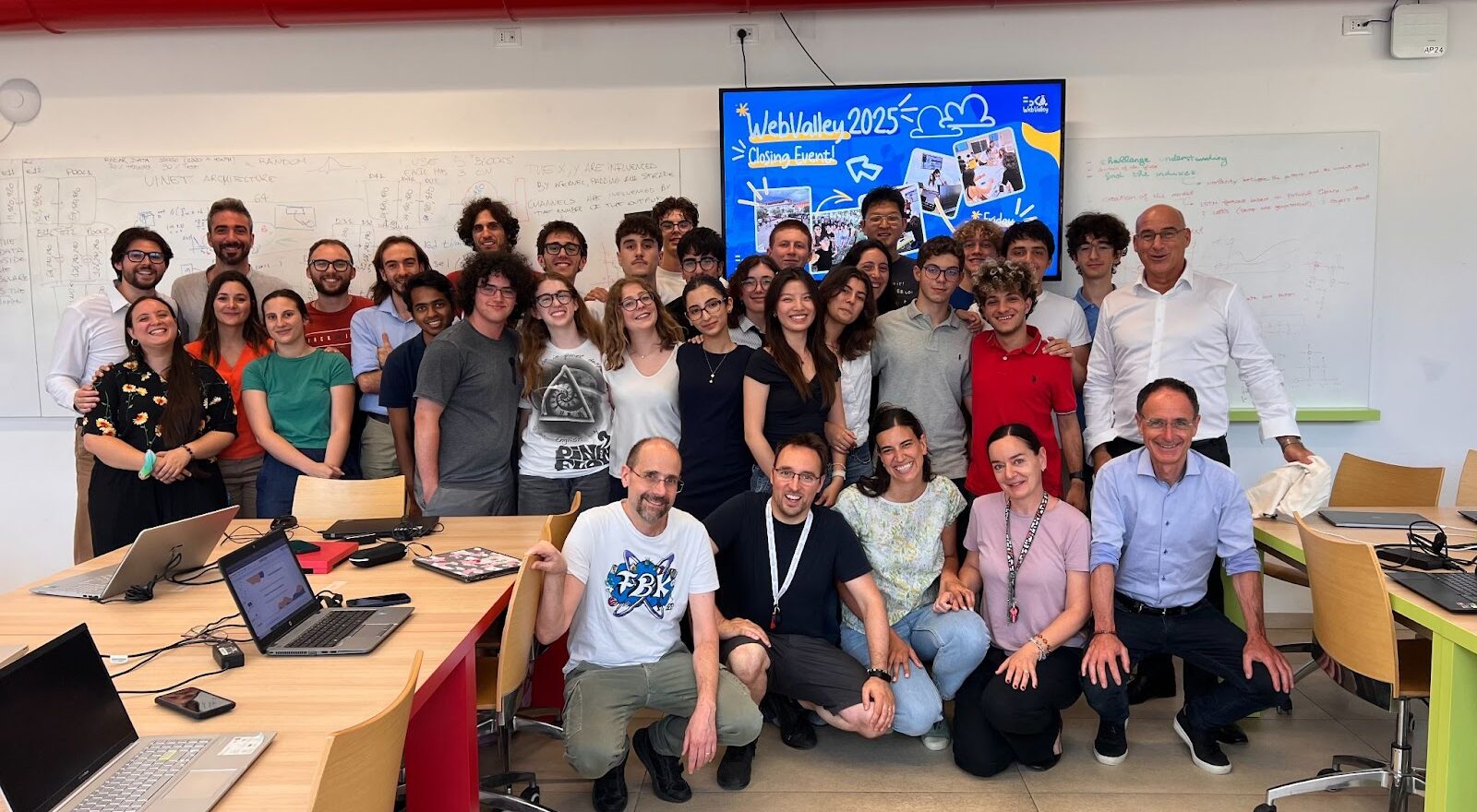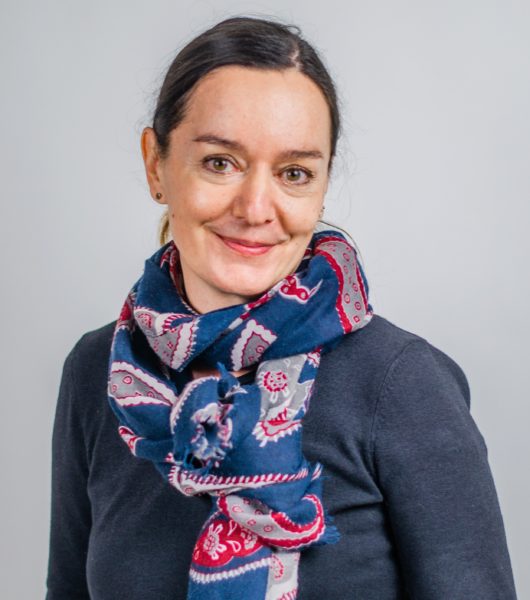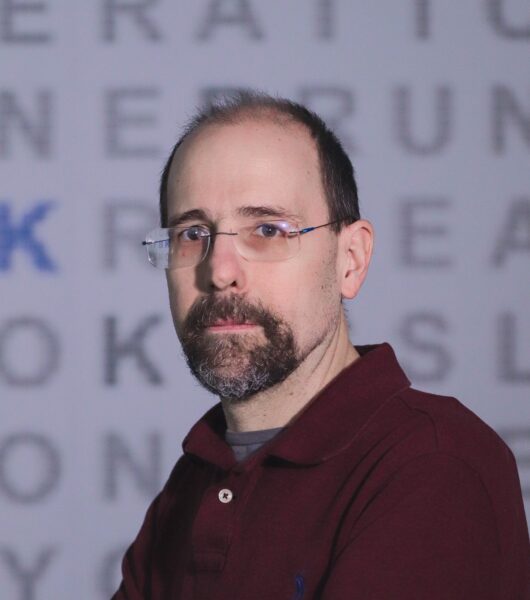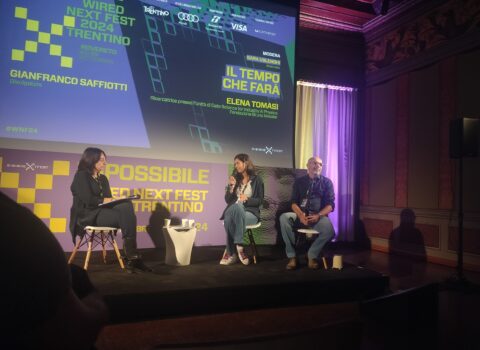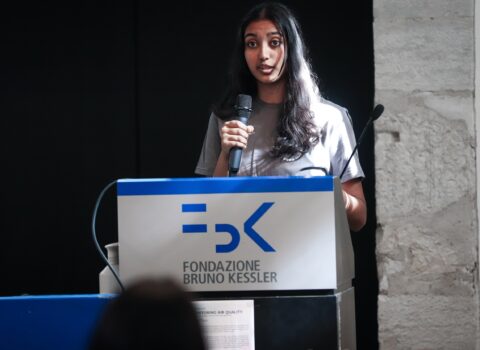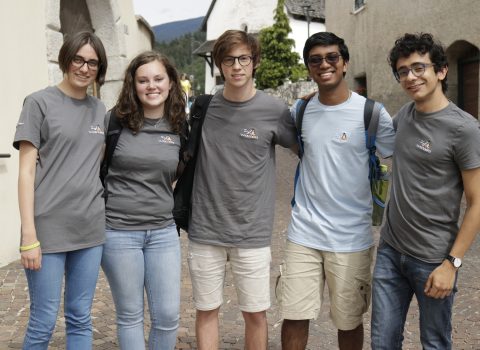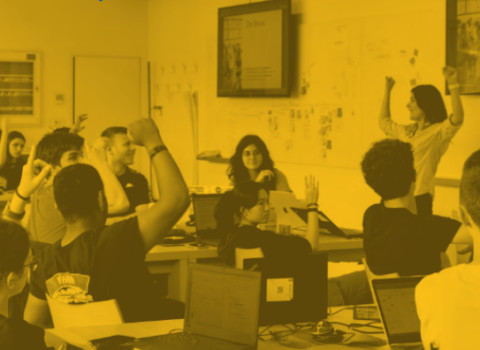
Challenges that make you grow
Mission accomplished for WebValley 2025. This year's edition focused on applying data science and artificial intelligence tools to the field of meteorology and climate science.
To summarize a long and meaningful journey: WebValley creates a community of enthusiastic, motivated 18-year-old students, guided by researchers who are experts in cutting-edge topics. From this encounter arises a shared passion for discovery and knowledge.
For 25 years, Fondazione Bruno Kessler (FBK), through the WebValley program, has offered talented young people from Trentino, across Italy, and around the world a unique and immersive educational experience. During the first week, participants attend courses and workshops to strengthen and expand their scientific and technological expertise. Lectures and tutorials on technical topics are delivered at an intensive level, helping bridge differences in prior knowledge. In the second week, supported by FBK researchers and international experts, the team dives into a real scientific research project. They explore topics of excellence using cutting-edge technology tools, such as cloud computing and collaborative platforms.
The 2025 edition— “Weather Meets Artificial Intelligence: Building Tomorrow’s Earth Science” —took place from June 15 through July 5. Students worked under the scientific supervision of FBK’s Data Science for Industry and Physics research unit, led by senior researchers Gabriele Franch and Elena Tomasi, in collaboration with ItaliaMeteo, MeteoTrentino, and the IT4LIA AI Factory project. These partners helped define and support the challenges addressed this year. Professors from the University of Trento, members of the Meteonetwork community, and experts from APPA Trento and CINECA also contributed to the journey into meteorology and climate science. The three challenges tackled by the student teams were timely and highly relevant.
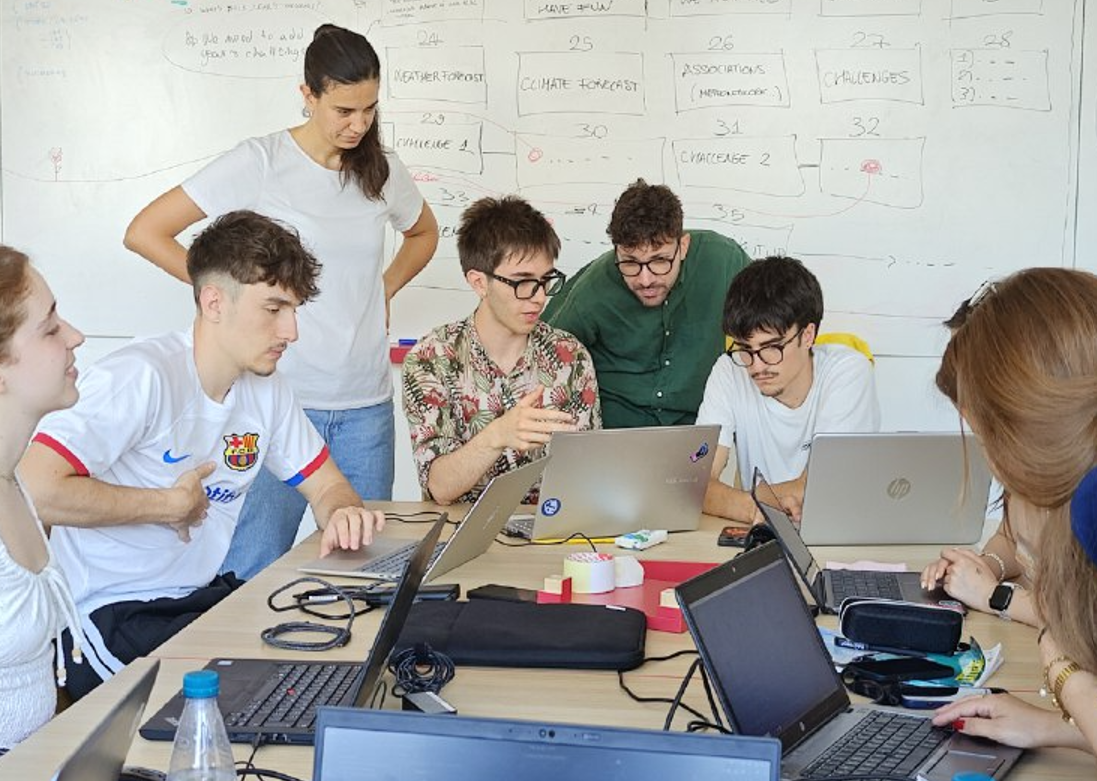
- Reconstructing Historical Meteorological Data – in collaboration with MeteoTrentino
Reconstructing weather time series is essential to understanding both natural climate variability and human-induced changes. Such reconstructions help validate climate models and improve future projections, supporting better resource management and planning for extreme weather events. MeteoTrentino challenged students to address the 4.43% data gap in their weather station network. How to rebuild, to fill these gaps? To fill these gaps, students developed a deep learning model that reconstructs variables like temperature and wind speed over time. They worked with a dataset of over 281 million entries, split into three subsets: training (30 years), validation (6 years), and testing (6 years). The result was GIANO, a bidirectional model that leverages both preceding and following data to fill in missing values effectively.
- Estimating Precipitation from Satellite Data – in collaboration with ItaliaMeteo
Estimating rainfall from satellite data enables global and continuous coverage, especially in remote or oceanic regions lacking ground stations. This information is vital for forecasting, water resource management, and mitigating flood or drought risks. The students developed an image-to-image deep learning approach to extract correlations between satellite-measured quantities (e.g., cloud temperature, amount of water vapor) and rainfall detected on the ground by Meteotrentino’s radar. The model was tested for accuracy, showing results aligned with the current state of the art. Future improvements could include applying the method to larger datasets and exploring generative AI models.
- Subseasonal Forecasting
This challenge involved students in sub-seasonal forecasting as part of a global competition promoted by the European Centre for Medium-Range Weather Forecasts (ECMWF). Sub-seasonal forecasts—spanning 14 to 31 days—are crucial for sectors like health, energy, and agriculture. Given the limited accuracy of existing models beyond 14 days, students designed a new deep learning model to predict large-scale atmospheric patterns. These patterns, in turn, can be used to infer temperature anomalies. Dividing the globe into nine regions, the team identified 17 key patterns and trained a model capable of predicting them. The results showed promise, especially for forecasts up to 10 days.
The team was composed of 4 students from Trentino-Alto Adige, 7 from other Italian regions (Veneto, Puglia, Sicily, Abruzzo, Molise, and Emilia-Romagna), and 6 international participants (4 from the USA, 1 from Brazil, and 1 from Saudi Arabia).
The 2025 edition was hosted by the Artigianelli Institute at Trento, whose staff played an active role in the educational team. Their contribution enabled the adoption of teaching and design thinking methodologies, fostering a structured approach to context analysis, idea generation, and results presentation—methods strongly rooted in the world of innovation.
The final presentation took place onFriday, July 4, in the afternoon at FBK main offices on Via Santa Croce in Trento.

This year’s presentation opened with a notable milestone: the launch of the WebValley Manifesto: Excellence & Innovation. The document celebrates the initiative’s core values, which have evolved since the partnership with the Artigianelli Institute began in 2020. Four pillars define this excellence: Applied Research, Outreach Skills, Innovative Spaces, and Inclusivity and Wellbeing.
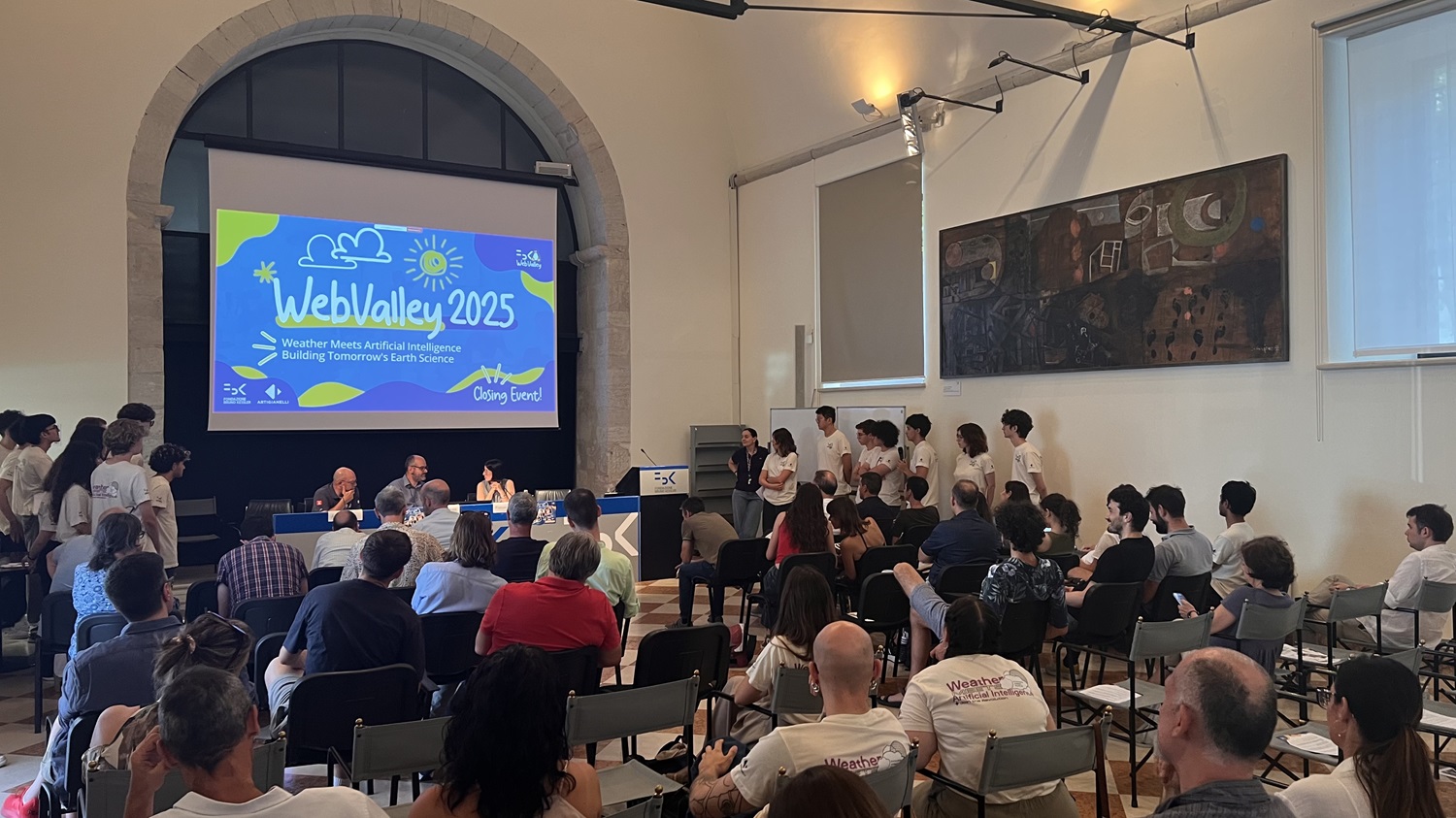
At the heart of the event were the students themselves, who presented their work, shared analyses, and demonstrated the value of the experience through rigorous and insightful discussions. A recording of the live-streamed event—including a welcome from ItaliaMeteo Director Carlo Cacciamani—is available on Fondazione Bruno Kessler’s YouTube channel. The students’ work and ideas were evaluated and discussed by high-profile guests: Andrea Piazza from the Risk Prevention Service and the Unified Emergency Center of the Autonomous Province of Trento, Martina Calovi, Associate Professor at the Norwegian University of Science and Technology (NTNU), and Roberto Visintainer, Senior Researcher at the Center for Computational and Systems Biology (COSBI).
During the three weeks of activities, we spoke with Deniel Pavone, WebValley tutor and representative of ItaliaMeteo—one of the project’s key partners. ItaliaMeteo, aligned with the World Meteorological Organization, works to strengthen the competitiveness and efficiency of Italy’s meteorological system, improving coordination in weather forecasting, climate assessments, and marine meteorology alongside national and regional authorities.
“WebValley,” says Pavone, part of ItaliaMeteo’s R&D Division for Meteorological, Oceanographic, and Climatological Modelling, “is a top-tier school that attracts international talent. I was thrilled to participate and introduce students to operational meteorology, sparking their curiosity about the physical principles behind atmospheric phenomena.”
ItaliaMeteo launched one of the three challenges, aiming to build a machine learning model for satellite-based precipitation estimation. “This project is particularly valuable,” Pavone continues, “for its potential to improve data coverage in areas without adequate ground-based infrastructure, such as the sea or regions with limited weather monitoring investments. In Italy, a country surrounded by water, enhancing understanding of marine atmospheric phenomena is crucial for both monitoring and improving forecasts.”
“For us too,” adds Claudia Dolci, co-director of WebValley along with Giuseppe Jurman, “this is a rewarding and enriching experience every year. We carefully select the student cohort, identifying emerging talents with strong interests in research, technology, and computer science. Some have already participated in science fairs or school research projects. In just three weeks, they further sharpen their skills by working with real-world data in a collaborative research setting. Watching their professional and personal growth is a privilege. This program isn’t just about education—it’s about building a true community. Over the years, we’ve welcomed nearly 500 students and built a strong network of brilliant young minds. Our relationship with them continues long after the program ends. Many stay in touch for guidance on university or career paths. It’s deeply rewarding when they return—sometimes as thesis students, PhDs, or even researchers.”
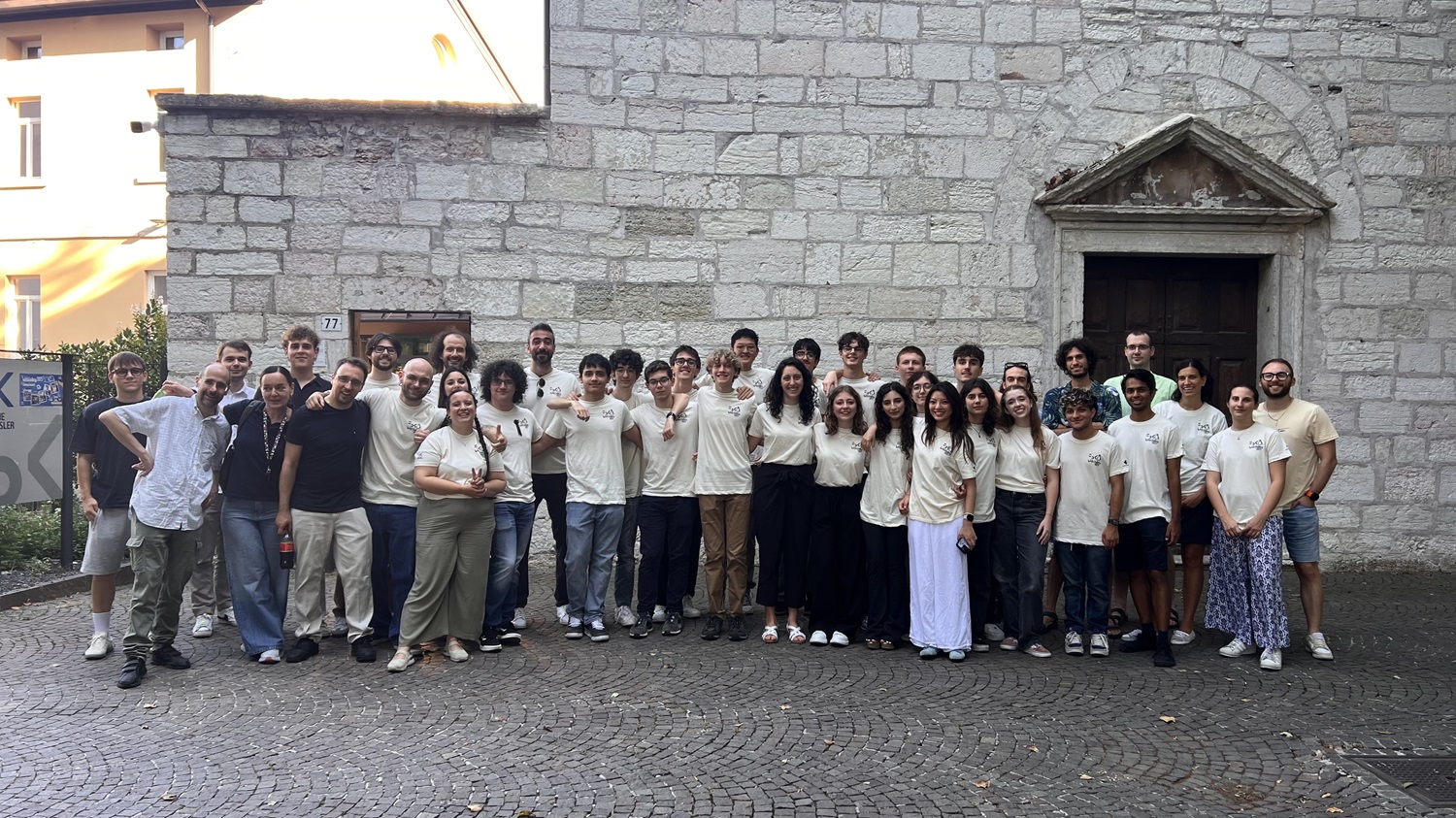
A fun fact: two of the scientific tutors from this edition—Gabriele Franch and Luca Coviello—were once WebValley participants themselves, in 2002 and 2012 respectively. Their stories illustrate how shared commitment and long-term passion help build communities of practice. In these communities, the mentor-student handoff becomes a key driver of learning, reinforced by empathy, emotional intelligence, and a distinctive culture of interdisciplinary, intercultural collaboration. WebValley is a training ground for both hard and soft skills—where young minds rise to the challenge of solving real-world, urgent problems.
